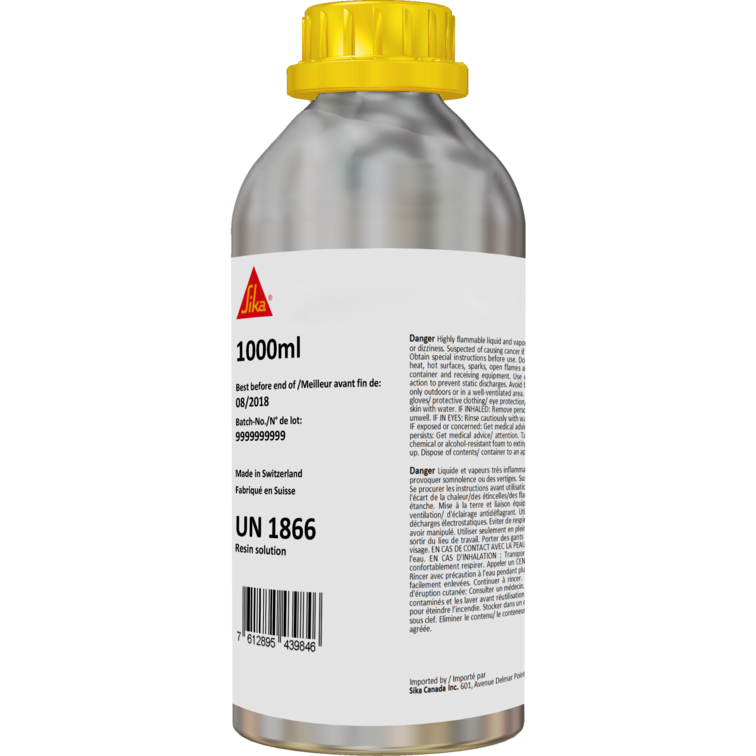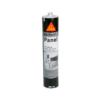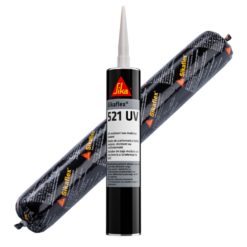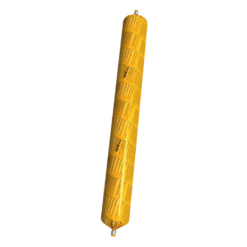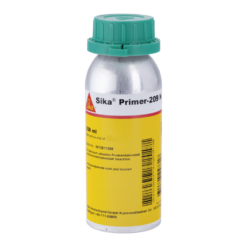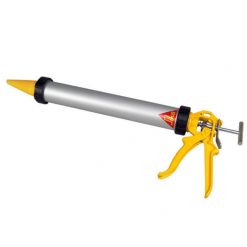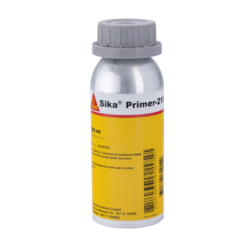SikaTack Aktivator 205- 4x1000ml/box (117498)
£97.00 +VAT
Price for 1 box (contains 4x1000ml)
Sika® Aktivator-205 is a transparent adhesion promoter that enhances bonding between substrates and primers or sealants/adhesives by creating active groups on the substrate when exposed to moisture. It is a solvent-based solution that is used to treat bond faces before the application of Sikaflex® and Sikasil® adhesives and sealants.
- Enhanced adhesion on various substrates
- Short flash-off time
- Easy to use
Primer Product Benefits
- Enhanced adhesion on various substrates
- Short flash-off time
- Easy to use
- Transparent
Usage
Sika® Aktivator-205 is employed to enhance the adhesion on non-porous surfaces like metals, painted surfaces, ceramic screen prints and plastics. Before using Sika® Aktivator-205 on materials prone to stress cracking, consult the manufacturer for advice and conduct tests on original substrates. This product is recommended only for experienced professional users. Actual tests on substrates and under specific conditions must be carried out to guarantee adhesion and material compatibility.
Advantages
- Enhanced adhesion on various substrates
- Short flash-off time
- Easy to use
- Transparent
Packaging
| Can | 4×1000 ml |
Typical Product Data
| Chemical base | Solvent-based adhesion promoter | |
| Colour (CQP001-1) | Colourless, clear
|
|
| Application temperature | 5 ─ 40 °C | |
| Application method | Wiping with lint-free paper towel | |
| Consumption | 20 ml/m2
|
|
| Flash-off time | minimum
maximum
|
10 minutes A/B
2 hours A/B
|
| Shelf life | 12 months C |
| CQP = Corporate Quality Procedure | A) 23 °C / 50 % r. h. |
| B) for specific application, temperature and flash-off time may be different | C) stored in sealed container in a dry place at ≤ 25 °C |
IMPORTANT NOTE
Sika® Aktivator-205 contains solvent which may dull the surface finish of some freshly applied paints. Preliminary trials must be carried out.
Never apply to porous substrates since it may not dry completely and prevent the adhesive or sealant from curing.
Protect adjacent surfaces by masking where necessary.
If Sika® Aktivator-205 is accidentally splashed onto adjacent surfaces, wipe-off immediately with a clean, dry cloth.
Sika® Aktivator-205 is a moisture reactive system. In order to maintain product quality it is important to reseal the container with the inner plastic liner immediately after use. Once the surface pre-treatment operation is completed the cap has to be screwed on. Prolonged exposure to atmospheric moisture will cause Sika® Aktivator-205 to become inactive. Immediately discard Sika® Aktivator-205 if it has become opaque instead of clear. Dispose of product approx. one month after opening if used frequently or after two months in case of infrequent use.
Never dilute or mix Sika® Aktivator-205 with any other substrances.
It must not be used for tooling/smoothing of products or as cleaning agent.
If used on transparent or translucent substrates such as float glass, plastics, etc., an adequate UV protection is mandatory.
METHOD OF APPLICATION
To ensure good adhesion, surfaces must be free of any contaminants, including grease, oil, dust, and other debris. Prior to applying the activator, pre-treatment methods like scuffing and cleaning may help to enhance adhesion on the substrates.
Primer Application
To apply Sika® Aktivator-205, use a clean, lint-free paper towel that is moistened (but not soaked) with the product. Don’t dip the towel into the activator and only use a clean side of the towel. Change the towel frequently and don’t reuse it. Apply the activator sparingly to avoid adhesion failure.
If the pre-treated area isn’t bonded within the maximum flash-off time, repeat the activation process once only.
The best application and surface temperature range is between 15°C and 25°C. The amount and application method of the activator will depend on the specific substrates involved.
Make sure to tightly reseal the container after each use. The surfaces being bonded must be clean, dry, and free from grease, oil, dust, and other contaminants. Additional pre-treatment methods such as scuffing and cleaning may be helpful for improving adhesion on some substrates.
| Weight | 1.1 kg |
|---|
Related products
Sika Products
Sika Products
Sika Products
Sika Products
Sika Products
Sika Products
Sika Products
Sika Products

